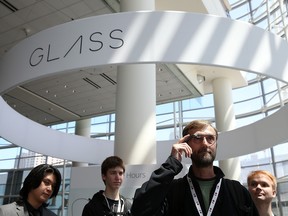Stakeholders need to be ready to accept it into their lives for the technology to succeed

It’s not enough for companies to create technology that works effectively and serves a purpose; stakeholders, including investors and consumers, need to be ready to accept it into their lives for the technology to succeed.
The importance of finding the exact right time to introduce technology, such as AI, to a new audience is very important, said Ela Veresiu, an associate professor of marketing at York University’s Schulich School of Business and co-author of a recent paper on the topic.
Launching domain-specific AI products requires more patience from companies than general-purpose AI, the paper said, which is seen as less risky.
“Companies have to create very clear and strong boundaries to limit the AI scope; they have to give consumers longer time to understand the technology,” Veresiu said.
Even so, she said we still haven’t reached the optimal launch point for general-purpose AI. She said the flaws apparent in current general-purpose AI, such as hallucinations, exist for a reason, suggesting tech companies are attempting to ease consumers in by presenting AI as innocuous and fallible.
“The most interesting thing we found when it comes to general-purpose AI is that companies seem to be releasing demos with significant flaws to give stakeholders new time to adapt to new technology,” she said, adding these issues allow for interested parties to voice their concerns and help make the technology better. “They can provide feedback to sort of improve it together.”
Since the technology is far from perfect, consumers feel less threatened, Veresiu said.
“General-purpose AI doesn’t seem as risky. It’s an interesting model to present AI with all its flaws,” she said. “Our hunch is it is done on purpose to decrease anxiety and fear of the perfect robot that’s going to take over the world, our jobs, our lives. Those hallucinations play a role in assuaging anxieties that people have from pop culture and entertainment.”
Regardless, companies are charging forward with their AI plans. WekaIO Inc. recently surveyed more than 1,500 AI practitioners and decision-makers and found increased investment in AI technology.
According to the resulting 2024 Global Trends in AI report, 48 per cent of North American respondents said AI is widely implemented at their organization, while 88 per cent said they are actively investigating generative AI. The concerns expressed focused on the sustainability of AI infrastructure and the ability to practically manage and store data.
The findings suggest companies are doubling down on the hype and promise of AI, despite hesitation from other stakeholders.
Canadians are pretty fearful of AI. Getting them to believe it will make life easier is a pretty monumental challenge
Angus Lockhart
But while business leaders may be championing the tech, Angus Lockhart, senior policy analyst at the Dais at Toronto Metropolitan University, said another key stakeholder need is investment for implementation to succeed.
“I think employees are probably the biggest group that needs to buy in,” he said. “Employees are on the frontlines using the technology day to day. In most cases, the tech isn’t going to replace them, but it could become a large part of what they do. Lots of tech fails at that implementation stage. You need employees who are willing to use the technology.”
If companies are to succeed with incorporating AI in their businesses, they will need to address the broader, cultural concerns about AI.
“Canadians are pretty fearful of AI. Getting them to believe it will make life easier is a pretty monumental challenge,” Lockhart said. “I don’t see it changing in the short term. I would imagine it takes some kind of actual event to shift public opinion on AI.”
Veresiu agrees: “Especially in North America, consumers are more skeptical.”
One way companies can attract support, she said, is by emphasizing a human component.
“It really becomes about human-centricity,” she said. “Consumers and other key stakeholders feel more comfortable and trusting when AI is run by humans.”